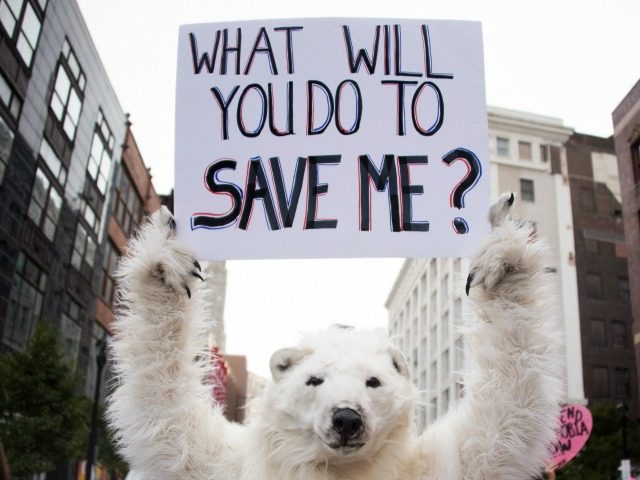In the latest in radical climate doomsaying, a new report warns that fossil fuel consumption will need to be reduced “below a quarter of primary energy supply by 2100” to avoid possibly disastrous effects on global temperatures.
In their report, titled “Pathways for balancing CO2 emissions and sinks,” a team of eight scientists warns that “anthropogenic emissions need to peak within the next 10 years, to maintain realistic pathways to meeting the COP21 emissions and warming targets.”
The statement was immediately repackaged by environmentalists to read: “Scientists say we have ten years to save the earth.”
As is always the case in studies of this sort, the scientists juggle dozens of variables, none of which is entirely predictable and which taken together tell us virtually nothing about the future of the environment.
Although the scientists admit that “there are significant uncertainties associated with projecting energy consumption several decades into the future,” they fail to acknowledge a number of even greater uncertainties implicit in their calculations.
Despite their valiant efforts to produce trustworthy projections, the scientists rely on basic presumptions that are contested by extremely capable minds within their own field.
Dr. Duane Thresher, a climate scientist with a Ph.D. from Columbia University and NASA GISS, has stated bluntly that it is “mathematically impossible for climate models to predict climate.”
Appealing to corollaries of the well-known “Butterfly Effect,” Thresher said that long-term climate forecasting is “a quintessential example of this phenomenon” because of the elevated number of variables playing into climate phenomena.
“Climate models are just more complex/chaotic weather models,” Thresher has noted, “which have a theoretical maximum predictive ability of just 10 days into the future.”
“Predicting climate decades or even just years into the future is a lie, albeit a useful one for publication and funding,” he said.
Undaunted, the team of scientists has declared that achieving global, net decarbonization of human activities “would halt and even reverse anthropogenic climate change through the net removal of carbon from the atmosphere.”
Among the many unproven assumptions behind this assertion is the implied claim that human-induced climate change (itself a contested concept) is a function solely of carbon emissions, such that “net decarbonization” would halt or reverse it.
Here the scientists state as fact what is by all accounts very much an unproven hypothesis.
In recent studies, plants have been found to adapt to a greater carbon concentration in the atmosphere, unexpectedly accelerating their ability to assimilate carbon, something unaccounted for in the new report.
Moreover, there is still significant debate within the scientific community regarding the precise relationship between carbon presence in the atmosphere, global temperatures and the health of the planet.
While this study takes for granted that carbon dioxide is an evil that must be severely restricted, other eminent scholars have suggested that the contrary is true.
One such scientist, Dr. William Happer, professor emeritus of physics at Princeton University and a member of the National Academy of Sciences, has insisted that the earth can handle substantially more carbon dioxide than is currently found in the atmosphere and would actually benefit from a higher concentration.
“We’ve heard that CO2 is a demon molecule that causes global warming,” Happer has stated, whereas in reality more carbon dioxide in the atmosphere produces increased crop yields and a greener planet.
According to Happer, an increase in carbon dioxide would only benefit both plant life and human life.
Similarly, Dr. Indur Goklany, who has previously represented the United States on the Intergovernmental Panel on Climate Change (IPCC), has asserted that the rising level of carbon dioxide in the earth’s atmosphere “is currently net beneficial for both humanity and the biosphere generally”.
The benefits are real, whereas the costs of warming are uncertain,” he said in a 2015 paper titled “Carbon Dioxide: The Good News.”
Follow Thomas D. Williams on Twitter Follow @tdwilliamsrome

COMMENTS
Please let us know if you're having issues with commenting.